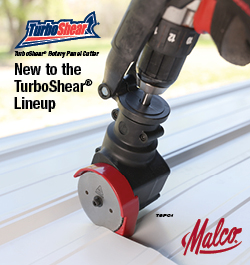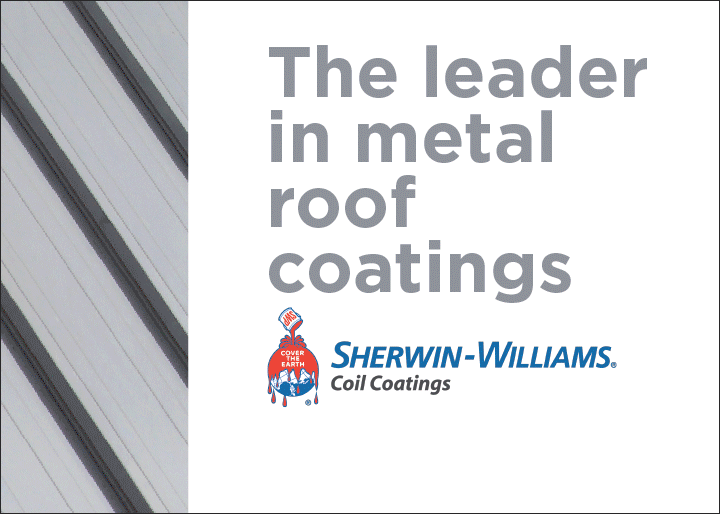UP TO THE MINUTE
Metal roofs give extra protection when harsh weather hits

By Metal Sales.
Switching from a traditional roof to a metal roof provides the dependability needed to combat the increase in disastrous weather events.
In more recent years, there has been an increase in extreme weather across the nation. Devastating hurricanes, wildfires, tornadoes and more have left homes crumbling and communities working together to rebuild. Even homes that remain intact can be unsafe and require extensive repairs.
Weather-related damage is common and often expensive to repair. If you live in an area where harsh weather is common, your expenses can quickly mount if you don’t have a roof that adequately protects you and your home.
Metal roofing provides the versatility and dependability you require in a roof to protect you from the harshest of elements.
For good reason, many homeowners have switched from a traditional roof to a metal roof. Metal roofs are both dependable and strong, providing your home with the best protection against extreme weather conditions.
Metal roofs are impervious to moisture, making them an excellent choice in areas prone to heavy rainfall and downpours. They are also low maintenance and have a Class A fire resistance rating.
Metal roofs are an excellent investment because they last 50 years or more, which is two to three times longer than other materials. This will save you money by lowering the cost of replacement and repair.
Extreme winds
High winds can quickly cause widespread devastation, especially in areas prone to hurricanes and tornadoes. Because metal roofs are made up of fewer individual pieces, they are much less likely to be damaged by wind. Because there are fewer items for the wind to latch onto, the wind will be directed away from the roof.
When compared to shingled roofs, each shingle can easily be blown off by high winds, exposing your home to storm damage. Metal roofs are also more resistant to debris picked up by high winds, allowing them to retain their shape and ability to protect your home.
Storms that come unexpectedly
Severe storms are the most common example of how metal roofs protect against extreme weather. Many other roofing materials will be damaged or compromised in some way when exposed to torrential downpours and electrical storms.
Several shingles on a roof with asphalt or tile shingles may be lost during the storm. Metal roofs, on the other hand, are far more durable and can easily withstand heavy rain. Furthermore, water and rain run off metal roofs far more easily than asphalt roofs. This reduces the likelihood of standing water after a storm, which reduces the risk of leaks and long-term water damage to the roof.
Metal roofs are also much more resistant to hail and freezing rain. They are much more resistant to ice and will not dent or damage as easily as other roofing materials.
Will a metal roof attract lighting?
It is a common misconception that metal roofs are more susceptible to lightning strikes and behave similarly to lightning rods.
In reality, metal roofing is no more likely than any other type of roof to be struck by lightning. If they are struck, the metal assists in safely transferring the electricity from the shock into the ground and away from the home. As a result, metal roofing is one of the most secure options for homeowners who live in areas prone to thunderstorms and lightning.
How do metal roofs perform?
Metal roofs offer superior weather protection in both hot and cold climates, especially when compared to other roofing materials. Shingled roofs, for example, are known to be easily damaged by hail, to burn during fires and to leak when water infiltrates the gaps between shingles.
Metal roofs, on the other hand, are much less likely to be damaged by hail, both structurally and cosmetically, due to the metal’s durability and strength. They are also not prone to catching fire and are built with no natural gaps in coverage on the roof’s surface.
- What makes metal a good all-weather roof material?
- Metal can be installed over asphalt shingles or other types of roofs.
- Metal roofs are durable, resulting in less wear and tear. The sturdy material prevents flying debris damage, water and sand accumulation and other problems.
- Metal roofs require less upkeep.
- Metal roofs are recommended by FEMA for residents who live in areas prone to high winds and hurricanes.
- They are extremely energy efficient.
- Metal roofs have a long lifespan (40-70 years)
Original article source: Metal Sales
Learn more about Metal Sales in their Coffee Shop Directory or visit www.metalsales.us.com.




















Comments
Leave a Reply
Have an account? Login to leave a comment!
Sign In